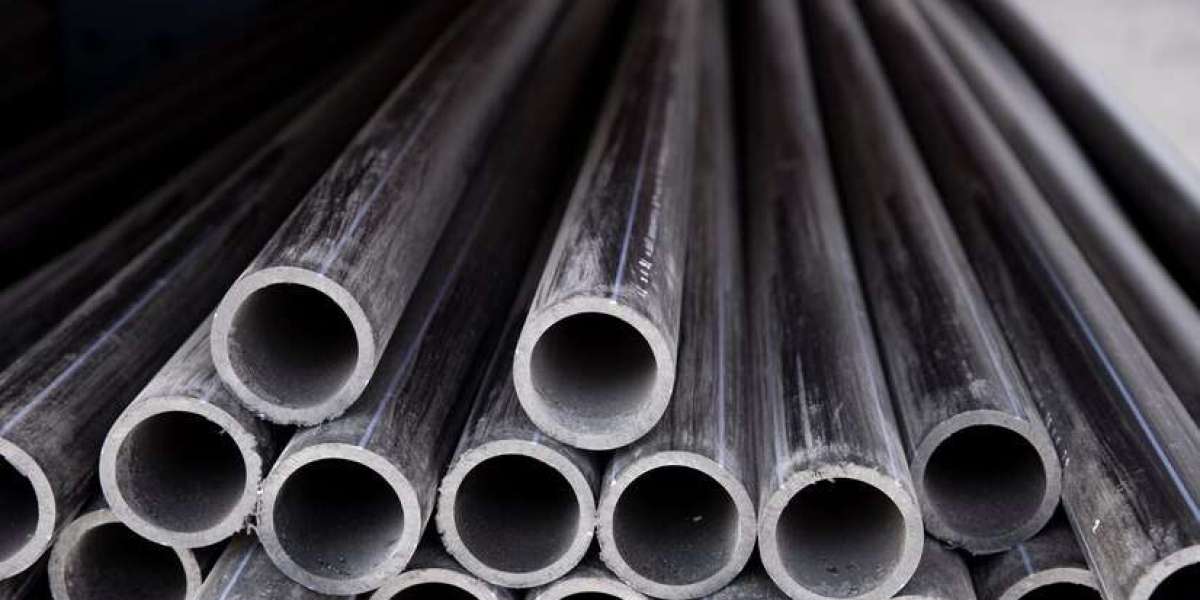In today's dynamic commodity market, US HRC prices play a pivotal role in shaping economic activities and influencing various sectors. Understanding the intricate dynamics of HRC prices is essential for businesses, investors, and policymakers alike.
Introduction to US HRC Prices
Hot Rolled Coil (HRC) prices refer to the benchmark prices for steel coils that have been hot rolled and are ready for further processing. These prices serve as an important indicator of market trends and economic conditions.
Understanding Commodity Markets
Commodity markets encompass a wide range of raw materials and goods, including metals, energy products, agricultural products, and more. These markets facilitate the trading of physical goods based on standardized contracts.
Factors Influencing HRC Prices
Hot Rolled Coil (HRC) prices are subject to various influences, each playing a crucial role in determining their fluctuation in the market. In this section, we'll delve into three key factors: Supply and Demand Dynamics, Economic Indicators, and Trade Policies.
Supply and Demand Dynamics
The equilibrium between supply and demand stands as a primary determinant of HRC prices. When supply surpasses demand, prices tend to decrease, whereas a shortage in supply relative to demand leads to price increases. Several factors contribute to these dynamics:
- Production Capacity: The capacity of steel producers to manufacture HRC directly impacts supply levels. Higher production capacity typically leads to increased supply, resulting in lower prices, while production constraints may tighten supply and drive prices upward.
- Inventory Levels: Inventory levels within the steel industry also influence HRC prices. Excess inventory can put downward pressure on prices as producers seek to offload surplus stock, whereas low inventory levels may drive prices higher due to scarcity.
- Consumer Demand: Economic activities in industries such as construction, automotive, and manufacturing heavily influence consumer demand for HRC. Strong demand from these sectors tends to drive prices up, whereas a slowdown in economic growth may dampen demand and lead to price decreases.
Economic Indicators
Economic indicators offer valuable insights into the overall health and direction of the economy, thereby influencing HRC prices. Key economic indicators affecting HRC prices include:
- Gross Domestic Product (GDP) Growth: GDP growth reflects the pace at which a country's economy is expanding. Robust GDP growth typically correlates with increased demand for steel and HRC, thereby exerting upward pressure on prices.
- Inflation Rates: Inflation, or the rate at which the general price level of goods and services rises, affects the purchasing power of consumers and businesses. Higher inflation rates may drive up production costs for steel producers, potentially leading to higher HRC prices.
- Employment Figures: The level of employment in an economy affects consumer spending and overall economic activity. Low unemployment rates may signify a strong economy with increased consumer demand for goods, including steel products like HRC.
Trade Policies
Trade policies, including tariffs, quotas, and international trade agreements, can significantly impact the prices of HRC. Key considerations regarding trade policies include:
- Tariffs: Tariffs imposed on imported steel can raise the cost of foreign HRC, making domestically produced HRC relatively more competitive. Conversely, the removal of tariffs or imposition of retaliatory tariffs by trading partners can influence the competitiveness of domestic HRC prices.
- International Trade Agreements: Trade agreements between countries may include provisions related to steel and HRC trade, affecting market access and pricing dynamics. Changes in trade agreements can alter the flow of HRC imports and exports, thereby impacting prices in domestic markets.
In conclusion, US HRC prices are influenced by a complex interplay of supply and demand dynamics, economic indicators, and trade policies. Understanding these factors is crucial for stakeholders in the steel industry and related sectors to navigate market conditions effectively.
Impact of US HRC Prices on Commodity Market
The fluctuations in US Hot Rolled Coil (HRC) prices have significant ripple effects across various sectors of the commodity market. In this section, we'll explore how changes in HRC prices impact the steel industry, construction sector, automotive industry, and global trade.
Steel Industry
The steel industry stands as one of the most directly affected sectors by changes in HRC prices. Fluctuations in HRC prices can have profound implications for steel producers, manufacturers, and consumers alike. Here's how:
- Production Costs: HRC prices directly influence the production costs for steel manufacturers. When HRC prices rise, the cost of raw materials increases, thereby squeezing profit margins for steel producers.
- Profitability: The profitability of steel companies is closely tied to HRC prices. Lower HRC prices can erode profit margins, while higher prices may lead to increased profitability, assuming demand remains robust.
- Competitiveness: In a globalized market, the competitiveness of domestic steel producers is heavily influenced by HRC prices. Lower HRC prices can make domestically produced steel more competitive compared to imports, whereas higher prices may render domestic products less competitive.
Construction Sector
The construction sector is another major player affected by fluctuations in HRC prices. As a key consumer of steel products, the construction industry is sensitive to changes in input costs. Here's how HRC price fluctuations impact the construction sector:
- Cost of Building Materials: HRC prices directly impact the cost of steel, a primary building material used in construction projects. When HRC prices rise, construction companies face higher material costs, potentially affecting project budgets and profit margins.
- Infrastructure Projects: Fluctuations in HRC prices can influence the feasibility and cost-effectiveness of infrastructure projects such as bridges, roads, and buildings. Higher HRC prices may lead to delays or increased project costs, impacting overall construction activity.
- Housing Markets: Changes in HRC prices can also affect housing markets by influencing the cost of construction materials. Higher material costs may lead to increased home prices, affecting affordability and demand in the housing market.
Automotive Industry
The automotive industry relies heavily on steel for vehicle manufacturing, making it highly sensitive to changes in HRC prices. Here's how fluctuations in HRC prices impact the automotive sector:
- Cost of Raw Materials: HRC prices directly impact the cost of steel used in automotive manufacturing. Higher HRC prices can increase production costs for automakers, potentially leading to higher vehicle prices for consumers.
- Consumer Prices: Changes in HRC prices can ultimately affect consumer prices for vehicles. Automakers may pass on increased production costs to consumers in the form of higher prices, impacting affordability and demand in the automotive market.
Global Trade
US HRC prices also have implications for global trade dynamics, influencing international trade flows and trade balances. Here's how changes in HRC prices affect global trade:
- International Trade Flows: Fluctuations in US HRC prices can affect the competitiveness of domestic steel products in international markets. Lower HRC prices may stimulate exports, whereas higher prices may lead to increased imports or reduced export competitiveness.
- Competitiveness: The competitiveness of US steel products in global markets is closely linked to HRC prices. Lower HRC prices can enhance the competitiveness of US steel exports, potentially reducing trade deficits or increasing trade surpluses.
- Trade Balances: Changes in US HRC prices can impact trade balances by influencing the value of steel imports and exports. Higher HRC prices may lead to increased import costs, potentially widening trade deficits, while lower prices may have the opposite effect.
Strategies for Navigating Volatile HRC Prices
Businesses and investors can employ various strategies to manage the risks associated with volatile HRC prices, including hedging, diversification, and monitoring market trends.
Conclusion
In conclusion, US HRC prices wield significant influence over today's commodity market, impacting industries, economies, and global trade patterns. Understanding the factors driving these prices is crucial for stakeholders to make informed decisions and navigate market uncertainties effectively.
FAQs
What are HRC prices?
HRC prices refer to the benchmark prices for hot-rolled steel coils, reflecting market trends and economic conditions.
How do HRC prices affect the steel industry?
Fluctuations in HRC prices directly impact the steel industry, influencing production costs, profitability, and competitiveness.
What factors influence US HRC prices?
US HRC prices are influenced by factors such as supply and demand dynamics, economic indicators, and trade policies.
How can businesses navigate volatile HRC prices?
Businesses can employ strategies like hedging, diversification, and monitoring market trends to manage the risks associated with volatile HRC prices.
What is the global impact of US HRC prices?
US HRC prices have implications for global trade, influencing international trade flows, competitiveness, and trade balances.
To Get Real-Time Price of Hot Rolled Coil (HRC) Visit: https://pricevision.ai
Source: https://bresdel.com/blogs/474422/US-HRC-Prices-What-s-the-Impact-on-Today-s







